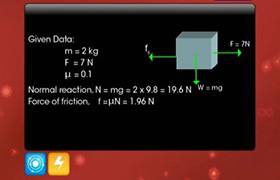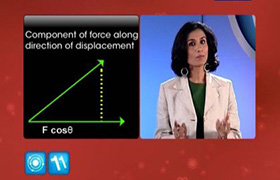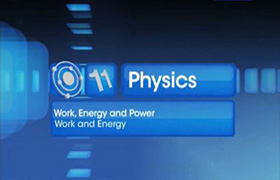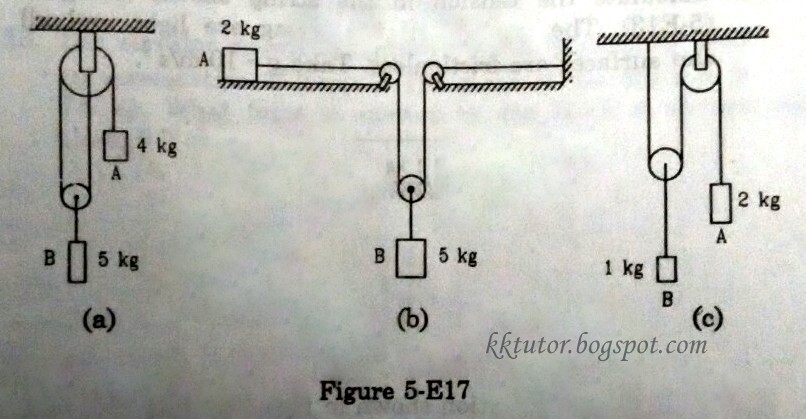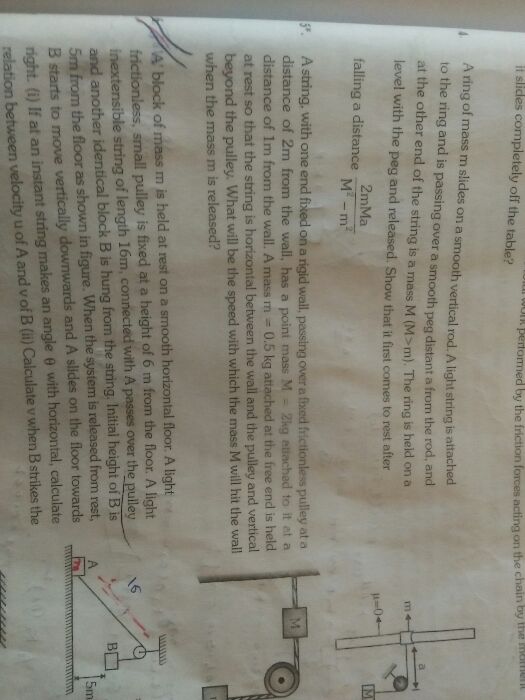CBSE Class 11-science Answered
explain about conservation of energy with problem
Asked by bandarirohinipriya | 08 Feb, 2022, 21:46: PM
Energy in the universe is conserved . Energy can not be created or destroyed .
We can transform one form of energy to other form.
While transforming energy from one form to other form , initial amount of energy will be final amount of energy.
For example, let us consider electrcial power production from hydro-electrci power station .
Water at a height has potential energy. When water flows down and rotates a turbine ,
loss of potential energy of water is converted into rotational kinetic energy of turbine.
There will be some energy loss due to friction in turbine .
Hence change in potential of energy water will be equal to sum of rotational kinetic energy of turbine and
loss of energy due to friction.
Then the rotational kineteic energy of turbine is used to rotate the armature of electical generator
to produce electrical energy.
Hence while transforming energy from one form to another , initial and final energy will be same .
There will not be creation of additional energy or destruction of energy .
This is conservation of energy.
Problem :-
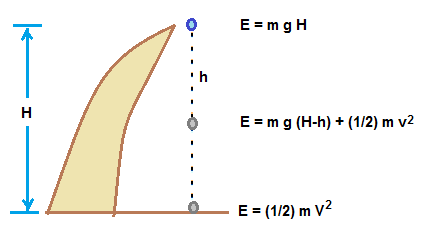
Let us consider an object of mass m is dropped from top of a cliff of height H
At top of cliff , total energy Et of object equals potential energy ,
Et = mgH .......................... (1)
In the middle of the path at a distance h from top, the object has potential energy [ m g (H-h) ] and
kinetic energy (1/2) m v2
Total energy at a distance h from top, Eh = [ m g (H-h) ] + [ (1/2) m v2 ] .......................(2)
where v is velocity of object at a distance h from top .
velocity v of object at a distance h from top is given as ,  .....................(3)
.....................(3)
 .....................(3)
.....................(3)By substituting velocity v from eqn.(3) , Eqn.(2) can be simplified as
Eh = m g H ......................................(4)
At the bottom of the cliff , just before hitting the ground, Object has only kinetic energy ,
Eo = (1/2) m V2.....................................(5)
where V is velocity of object at ground level.
velocity V of object at ground levle is given as ,  .....................(6)
.....................(6)
 .....................(6)
.....................(6)By substituting velocity V from eqn.(6) , Eqn.(5) can be simplified as
Eo = m g H ......................................(7)
From eqn.(1) , eqn.(4) and eq.(7) , we see that total energy is constant.
In this case of object falling due to gravity , initial potenetial energy is converted to kinetic energy by
maintaing the total energy as constant.
This explains the conservation of energy
Answered by Thiyagarajan K | 09 Feb, 2022, 12:42: PM
Concept Videos
CBSE 11-science - Physics
Asked by veenasangeeth2020 | 30 Jan, 2024, 09:56: AM
CBSE 11-science - Physics
Asked by abdulkhadirchajjo549 | 06 Dec, 2023, 18:55: PM
CBSE 11-science - Physics
Asked by anushkaverma.25707 | 24 Aug, 2023, 19:35: PM
CBSE 11-science - Physics
Asked by sakethrockzz007 | 04 Aug, 2023, 23:17: PM
CBSE 11-science - Physics
Asked by dhruvund8769 | 04 Feb, 2023, 23:41: PM
CBSE 11-science - Physics
Asked by vaniimtiyaz630 | 12 May, 2022, 00:19: AM
CBSE 11-science - Physics
Asked by bandarirohinipriya | 08 Feb, 2022, 21:46: PM
CBSE 11-science - Physics
Asked by ayushmishradbb | 11 Jun, 2020, 09:07: AM
CBSE 11-science - Physics
Asked by mahanteshsurpur5 | 07 May, 2020, 08:13: AM
CBSE 11-science - Physics
Asked by Harshhacker2580 | 04 May, 2020, 17:32: PM

